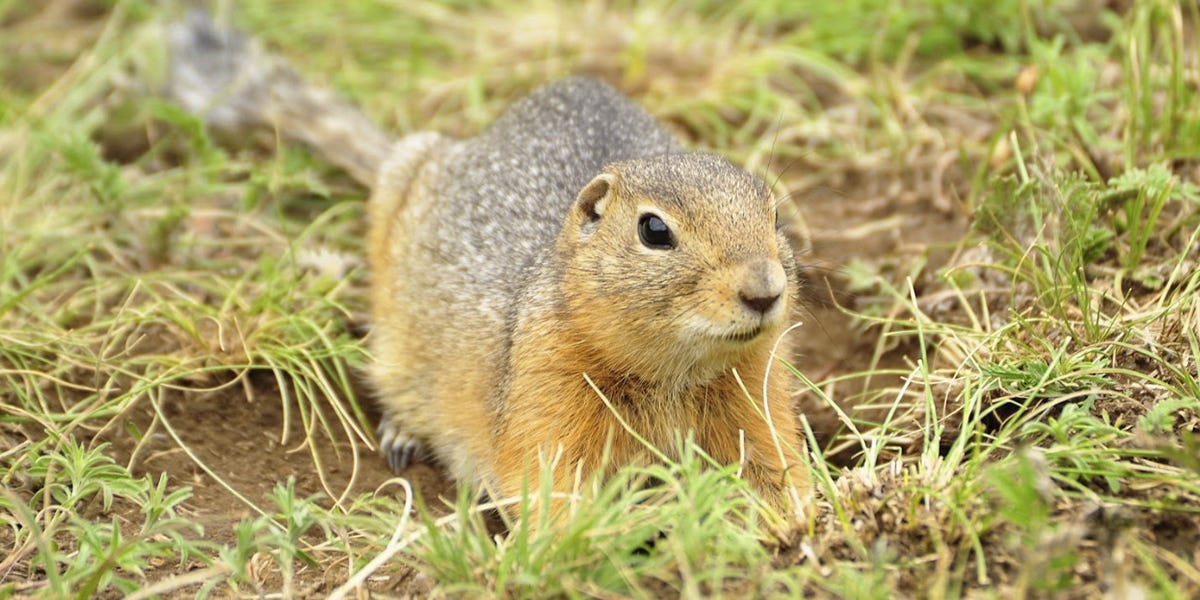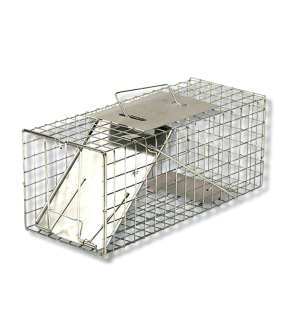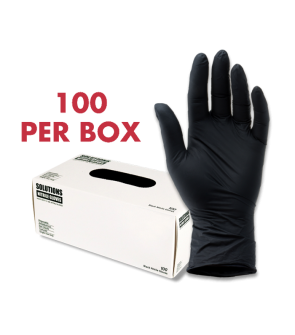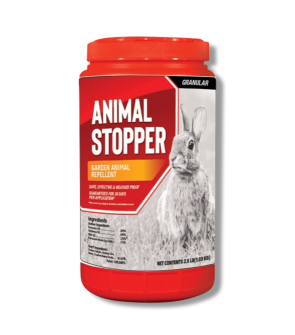Gain access to personalized product screening, the best pricing, rewards, and more!
Most Effective Products
Groundhog Control: How To Get Rid of Groundhogs
This page is a general groundhog pest control guide. Using the products and methods suggested, you will get control of Groundhog. Follow this guide and use the recommended products; we guarantee 100% control of groundhogs. Consult your local and state guidelines to see if the groundhog (or woodchuck) is a protected species in your location before applying control.
Groundhogs (also known as woodchucks) are burrowing animals that can cause damage with their insatiable feeding habits and underground activity. They are especially a problem for farmers and are becoming an increasing issue for homes and neighborhoods with Groundhogs moving where humans reside.
Groundhogs are large animals in the squirrel family. They can measure 16 to 20 inches in length and weigh up to 5 to 10 pounds. They have a chunky body and strong legs equipped with claws for digging tunnels.
Groundhogs are burrowing animals. Their habitat consists of deep underground systems that they create, reside in, and raise young in for the majority of their lives. These burrow systems can be as deep as five feet and range anywhere from eight to 60 feet out. Groundhogs could inhabit these tunnel systems for several years.
Groundhogs are incredibly destructive to farms and homes. They can quickly destroy gardens and crops, eating up to a pound of vegetation a day. Their extensive burrowing and tunneling can create large holes in turf, lawns, and lands that can damage farm equipment and potentially be dangerous for riders on horseback. They have also been known for underground power cables and creating power outages.
If you are encountering groundhogs on your property, this guide can help. Follow along to learn more about groundhogs and how to get rid of groundhogs using our easy-to-follow expert techniques and professional groundhog treatment recommendations.
Identification

It's important to properly identify the pests you are dealing with and confirm that they are groundhogs. Many animals burrow under the ground, and these can be confused with a groundhog. Below are the characteristics that set groundhogs apart from other burrowing rodents.
- Groundhogs (also called woodchucks) are brownish-gray, but white and black colors have been observed.
- They have a large, heavy body (16 to 20 inches long) and weigh 5 to 10 pounds.
- Tails could be anywhere from 4 to 7 inches.
- They move relatively quickly but can't run very fast.
- They have large front teeth.
- Their legs are strong, and claws are used for digging.
- Groundhogs spend most of the day feeding, basking in the sun, and sleeping in their burrows at night.
- When alerted by danger or startled by something, they emit a cry that sounds like a cross between a whistle and a reverberated chucking noise.
- They forage for food about 100 to 200 feet from their burrow, feeding on grass, flowering plants, squash, cucumbers, peas, tomatoes, and basically almost any kind of vegetation.
Use the description and image above to help you identify groundhogs on your property. If you are unsure, contact us; we will help correctly identify the pest.
Inspection

After confirming that you are dealing with groundhogs, you can move on to performing an inspection. During the inspection, you will search these areas in your property, inspecting for groundhog activity.
Where To Inspect
Groundhogs prefer to live in open lands surrounded by woody habitats. They can create burrows, usually in wide-open meadows and fields, but they can also create burrows close to properties, along fences, and inside farmland.
Inspect your yard or land, especially in fields, meadows, gardens, crops, vegetables, and open grassy areas close to dense or wooded habitats. Look next to roads, buildings, and around trees, especially if close to open areas.
What To Look For
You're looking for groundhog activity and their burrows. Most groundhog burrows will be found in wide-open grassy areas. Burrow entrances will have about 10 to 12 inches in diameter. There will be a large mound of dirt by the entrance. Burrows usually have more than one entrance, but these are well-hidden and hard to find. The best form of identification is finding one large entrance with freshly dug dirt.
Treatment
You're ready for treatment once you have confirmed the groundhog's main entrance. Remember to read all product labels, follow the application instructions on these labels, and stay safe by wearing personal protective equipment (PPE).
The best options for groundhog treatment are capturing the groundhog with a live trap and using Critter Ridder Animal Repellent. The Solutions Humane Live Animal Trap will allow you to easily catch the groundhog for relocation or hand it over to animal control. Critter Ridder Animal Repellent will work to repel and drive away groundhogs near your property. This product is a 100% organic and all-natural, however, results in its effectiveness may vary.
Step 1: Strategic Placement of the Groundhog Trap

The Solutions Humane Live Animal trap is easy to use and place. You must strategically place the trap where you noted groundhog activity and burrows during the inspection. If you were not able to find a burrow, place the trap in an area where you have seen groundhogs or noticed damage.
Once you have found a good area to place the groundhog trap, you will need to try to disguise it by covering it with natural elements like dirt, leaves, twigs, and other such items to make groundhogs more likely to explore it.
Step 2: Bait and Set The Trap

Next, use gloves to bait the trap with food to prevent groundhogs from smelling your scent. For groundhogs, we recommend using apple slices, carrots, or lettuce. A combination of all these might provide better results.
When baiting your trap, place the bait on the far end behind the trigger plate so the groundhog will have to contact the trigger to get to it. Depending on the bait being used, the bait can be either in a cup, placed directly on the trigger plate, or freely placed behind the trigger plate.
After positioning the bait inside the trap, set the trap door open by pushing on the door lock and lifting the door plate. Keep the door plate lifted while pulling the trigger arm forward to set it. You will know the trap is set when the trigger arm's hook catches the door.
Check the trap twice daily to see if the groundhog has been trapped. When trapped, consult local wildlife agencies to determine where you may release the animal. Some states require that only trained professionals relocate wild animals, while others only dictate where they may be released.
Step 3: Apply Critter Ridder Animal Repellent
Critter Ridder Animal Repellent is easy to use: either shake the product out from the container or use a hand spreader.
Apply 1 lb. of Critter Ridder Animal Repellent per 40 sq. ft. Repeat application after 30 days, if needed.
Place next groundhog damage in lawns, garden paths, and flowerbeds. To treat specific sites such as ornamental plants, trees, or shrubs, spot treat the ground around the area to be protected, or if possible, apply granules to the ground as a border around the entire area to be protected.
Prevention
After you have treated your property to ward off groundhogs, you don't want them to make a return. You can follow the listed ways to prevent groundhogs from frequenting your property and messing with your vegetation.
- Make environmental changes, such as adding fences to the crops, vegetables, and fields you want to protect. These fences should be 3 feet long, made of heavy wire mesh (of 2 inches), and buried at least 10 to 12 inches under the ground to prevent them from burrowing underneath. These fences work best in home gardens and small fields you want to protect.
- Another thing you can do is eliminate the plants and crops that groundhogs enjoy the most, like broccoli, plantains, lettuce, etc. With their food source gone, they will be forced to move to a new location that provides them with food.
- Mix ammonia with washing detergent, vinegar, hot pepper, and soap and pour the mixture down each hole. This may have to be repeated for a few days until the groundhogs go away. Always wear gloves before handling the mixture, as it may cause an allergic reaction, itchiness, or skin rash.
- Spray the ammonia mixture on the fence. Try getting a fence on the perimeter of your garden or landscape that is at least a foot high and goes a foot deep into the ground to prevent rodents from digging underneath and getting into your garden. Apply an ammonium mixture around the fence to prevent groundhogs from coming in, Which may have to be repeated if it gets washed off.
- And finally, use Critter Ridder Animal Repellent around your property to protect structures and vegetation.
Key Takeaways
What Are Groundhogs?
- Also known as woodchucks, groundhogs are large rodents that burrow holes in landscapes and damage sidewalks, driveways, and foundations. If uncontrolled, groundhogs could wipe out your precious garden within days. Gardens' soft soil and vegetation attract groundhogs to set up their runways.
How To Get Rid of Groundhogs in Your Yard
- To get rid of groundhogs, we recommend a combination of Live Trapping and Critter-Ridder Animal Repellent. Set up a Solutions Humane live trap with some apples or vegetables as bait and wait a few days to see if the groundhog is captured.
Preventing Groundhog Reinfestation
- Prevent groundhog activity by building fences and setting up other environmental modifications to make your property less appealing for groundhog harborage. Make periodic applications of Critter Ridder Animal Repellent. Form a band of repellent granules around your garden or foliage to keep groundhogs away.












